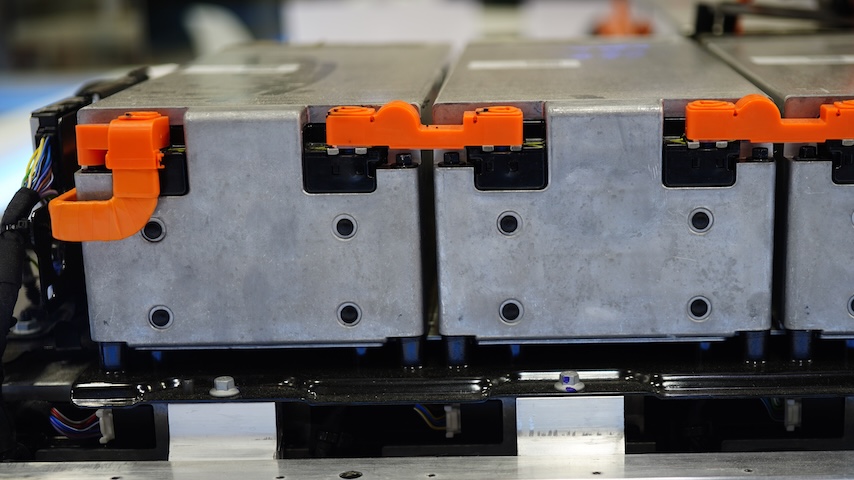Black Silicon Lowers Cost, Increases Efficiency for Solar
Black Silicon Lowers Cost, Increases Efficiency for Solar
Photovoltaic manufacturers are increasingly turning to black silicon, a semiconductor material with a textured surface that absorbs much more visible and infrared light compared to standard silicon solar cells. The unique energy absorption and semiconducting qualities of the material make it ideal for solar cells, as well as sensors for imaging applications, for example, thermal imaging cameras.
“One of the biggest trends in photovoltaic manufacturing today is the adoption of black silicon,” says Marcie Black, co-founder and CEO of Advanced Silicon Group, a provider of silicon nanotechnology for industrial applications.
When silicon undergoes chemical or stain etching, or laser processing, the result is a blackened surface covered with needle-like structures. Also called silicon nanowires, these structures are about 10microns in height and less than 1mircon in diameter. With high absorption of both visible and infrared light and overall low reflectivity, this altered material is much more sensitive to light than a standard silicon chip.
Reflectivity, which is typically about 20 percent to 30 percent for standard silicon, is reduced to about 5 percent for black silicon, meaning more light is absorbed. To maintain low reflectivity, the nanoscale features of the needles must be smaller than the wavelength of the incident light to avoid scattering. In 2016, Trina Solar, a solar panel manufacturer, announced it had achieved a new efficiency record for black silicon solar cells of 23.5 percent on a large-area, mono-crystalline, square silicon wafer.
Black silicon nanotextures are preferred for their antireflection properties, since they provide low reflection over a wide range of incident angles and wavelengths of light. Processes that create these features include variations of metal-enhanced etching, reactive ion etching, and laser processing. The geometry of nanotexures can vary; small changes at the nanoscale can have large impacts on performance at the macroscale. Silicon nanowire specifications such as diameter, density, and length can be customized, depending on the application. “The density, taper, and the length of nanowires drastically alter the optical reflection and absorption of the module,” Black says.
Designing the best shape and configuration for the nanostructures requires careful consideration, such as the tradeoff between depth of nanostructures (longer nanowires) and light reflection. “Obtaining cells with low reflection and high efficiency requires optimization,” Black says. “In general, the optimized nanostructure process depends on the details of the rest of the cell and possible module assembly processes. The nanostructure should be optimized for reliability, not just efficiency.”
Black silicon is currently used in about 30 percent of the multi-crystalline silicon solar cell market, which is valued at about $16 billion per year. The dominant market for black silicon is photovoltaics. Analysts predict that by 2020 100 percent of the multi-crystalline silicon market will be black silicon.
“While black silicon can increase solar cell efficiency and reduce processing costs, the main driver for converting cell manufacturing lines to black silicon is that the process works well on a lower-cost wafers known as diamond wire sawn wafers,” Black says.
Another emerging black silicon market is batteries. Lithium ions are easily inserted into silicon nanowires, without compromising structural integrity and electrical connectivity. Those qualities makes these “doped” nanowires a possible candidate for high capacity/low fade anodes for lithium ion batteries.
Nanowires can also be highly sensitive detectors of biomarkers, but traditional processes for fabrication are expensive and produce devices with only a handful of nanowires to accomplish the detection.Using black silicon, Advanced Silicon Group can produce devices with millions of nanowires inexpensively, making it possible to manufacture highly sensitive detectors of multiple biomarkers on a single chip. The high surface area to volume ratio of the nanowires enables more sensitive detection.
“We can make use of semiconductor technology and pack many different biomarker tests onto a single chip,” Black says. “Our long-term vision is to make low-cost, less-invasive sensing so that people can monitor their health on a regular basis.”
Mark Crawford is an independent writer.
Black silicon nanotextures are preferred for their antireflection properties, since they provide low reflection over a wide range of incident angles and wavelengths of light. Marcie R. Black, co-founder and CEO, Advanced Silicon Group



